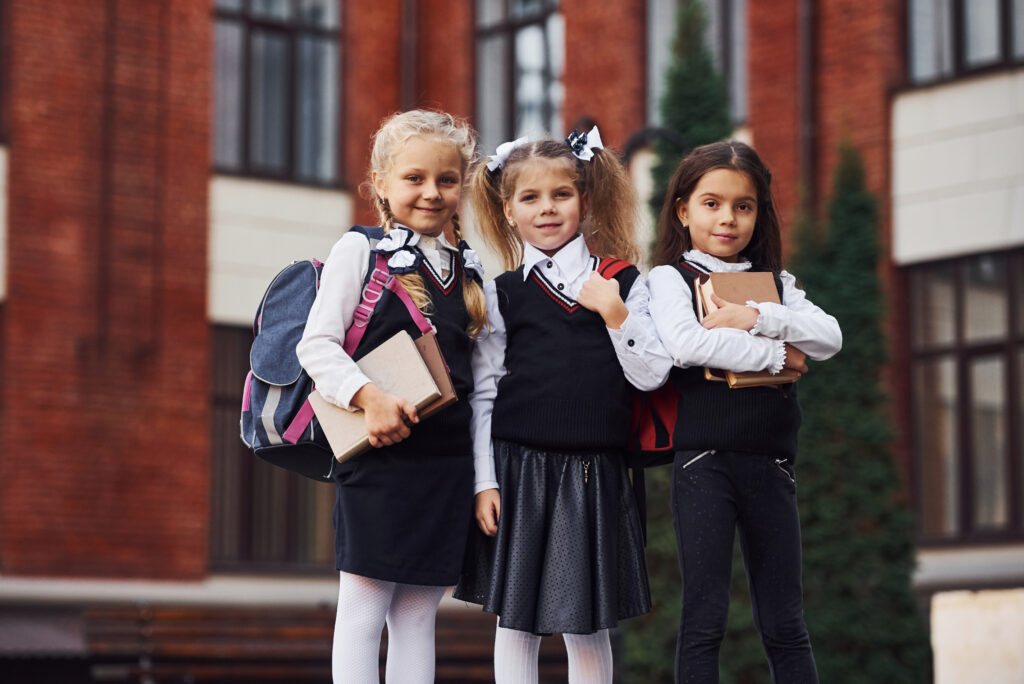For a number of economic and other reasons, in recent years people have started to move around the planet. Some try to travel more often to exotic countries, others decide to take the radical step of moving. And, if a family has children, it becomes a serious test for them. After all, they have to not only change culture, but also get used to a foreign language. Let's look at the differences between children who are non-native speakers and bilinguals. And also, how to help your child adapt to emigration.
Non-native speakers vs. bilinguals
Who are bilinguals? They are people who have been speaking two or more languages equally since childhood. They are able to switch between them without hesitation because the bilinguals' brains perceive the vocabulary of their languages as common. You can read more about this in our article: Bilingualism in children. Benefits of bilingualism.
For example, a family lives in Canada. The mother is Russian, the father is Canadian. The family speaks two languages using the OROYA method (one parent - one language). The child speaks the language of mom and dad, goes to a local school and has no communication problems.
Non-native speakers are people who have come to live in another country without knowing its language. And while they are learning a language that is new to them, they face certain difficulties.
Let's take an example: a Russian-speaking family moved from Russia to the USA, the children speak Russian and started studying in an American school. For the teachers, they are non-native speakers.
Or another example: seven people from former Soviet countries - Armenia, Kyrgyzstan, and Uzbekistan - come to Russia. In these families, the adults speak their native language, but the children do not know Russian or know it at an elementary level. When enrolled in kindergarten or school, such children are also non-native speakers for teachers. They are called inophones.
What are the main differences

At first glance, the difference between bilinguals and non-native speakers is small. The latter need a little time to learn the language of the country more quickly. On the other hand, there are several important nuances:
- The home country for a bilingual is the country of residence, while for a non-native speaker it is a new country with unique cultural characteristics. Non-native speakers may often encounter misunderstandings in everyday life. Bilinguals tend to have fewer or no such issues.
- bilinguals speak their languages at an equally high level, while non-native speakers have a strong bias towards the mother tongue.
- non-native speakers often experience psychological difficulties at first, as they do not know the language of the country well enough. As a result, they may feel depressed, insecure or aggressive. This is more common in children who speak poorly in elementary school.
- learning difficulties in non-native speakers can also occur due to lack of language practice. This can result in refusal to go to school, changes in behavior and lack of interest in the learning process.
How to help your child adapt faster


Despite the fact that at first adults have a lot of worries, it is important not to forget about children's feelings. A child should definitely feel support and understanding from close people - parents, relatives, friends. The family should show care so that children feel more confident.
The second step is to learn the language of the country. How can this be done more quickly? You can enroll your child in a course or find a tutor, or ask the school what experience they have with non-native speakers. Try to watch cartoons and movies in the new language together, read books and communicate with native speakers whenever possible.
If your child goes straight to the local school, be patient and supportive. It will take time for your child to adjust and make new friends. Help them with their homework and encourage them to do well.
To immerse yourself in the culture and get to know the country's traditions better, visit movies, museums, and concerts together. It will also be useful to learn about local history and geography.
How do you make new friends? Start looking for them where they can be. In order for a non-carrier child to integrate more quickly into a new community, enroll him or her in an interest club. If the child likes sports, find a suitable sports section. You can also pick up art and music classes. And an acting class can help your child overcome his or her insecurities and loosen up.
Finally, emphasize to your child the need to respect the cultural differences of the new country. This will help them to understand other people better and speed up their adaptation.
Adapting to a new country can be difficult, but it can be turned into an exciting adventure. It is up to adults to ensure that your child learns the language, makes new friends and adopts the culture of the country.
When moving, it is also important not to forget and maintain the mother tongue, which is gradually being lost. Our school helps children abroad to remember their roots and preserve cultural traditions. You can attend Russian language lessons, conversation school and more.
All lessons can be tried for free. Leave a request in the form below.







